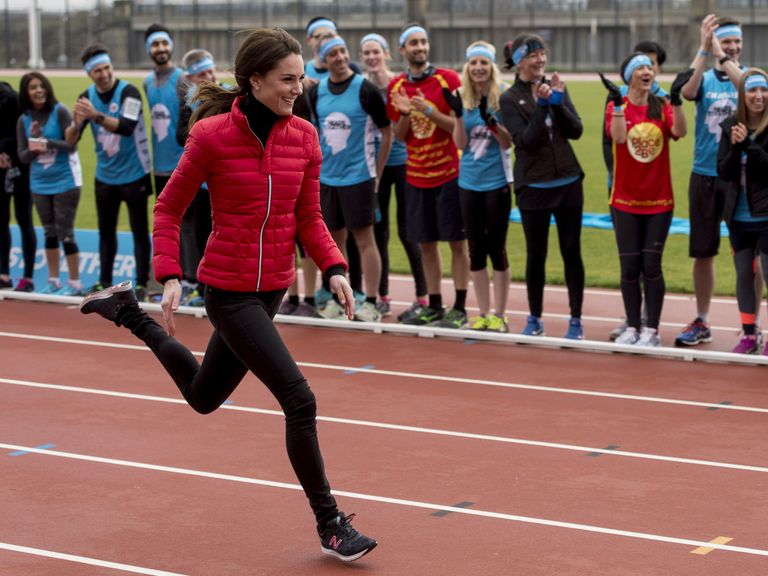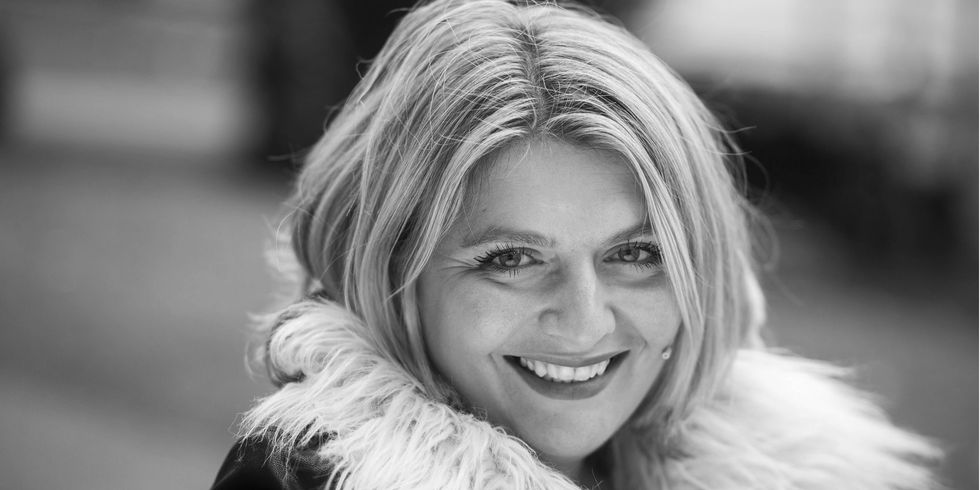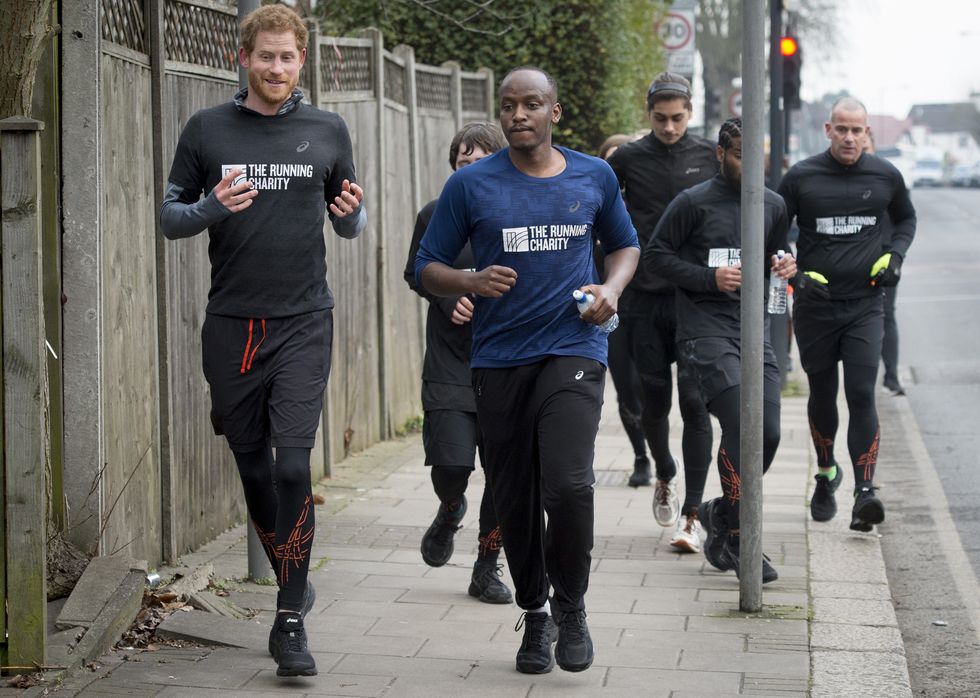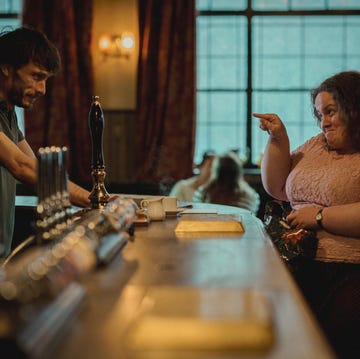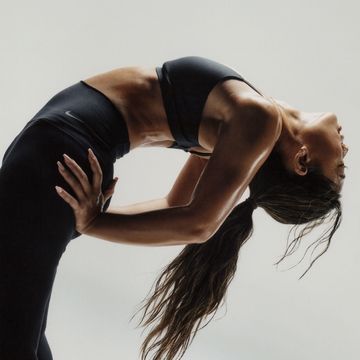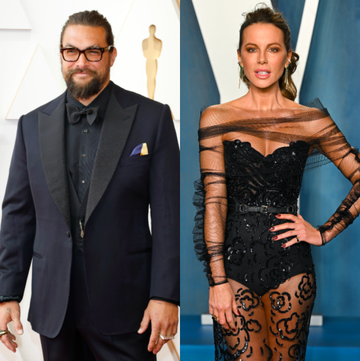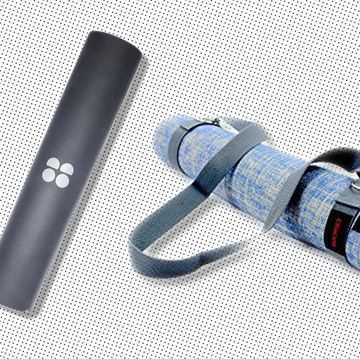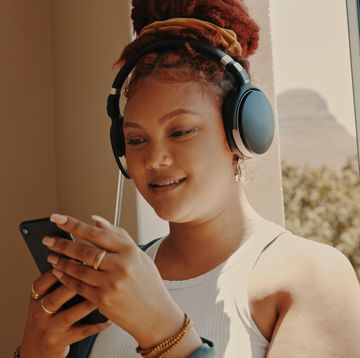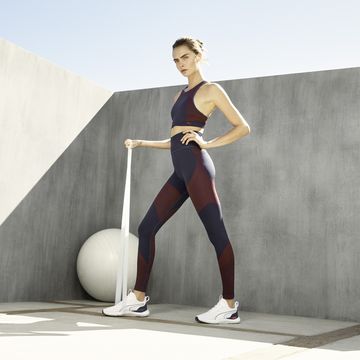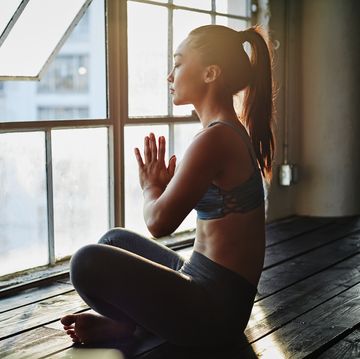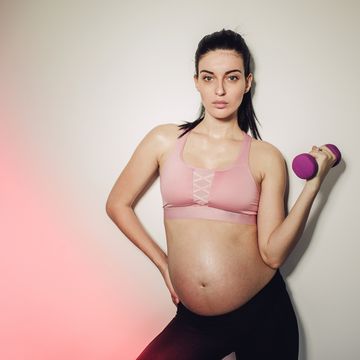My name is Bryony Gordon, and I'm a secret runner.
I say secret as you wouldn't know it to look at me. I'm overweight and have boobs like basketballs. I move slowly.
Quite often, when I'm walking down the street, I'm overtaken by old men and pregnant women. I have a bit of a belly and thick-set ankles that would not – do not – look elegant or graceful in trainers.
When I exert myself, I look a bit like I've been in the glare of a nuclear bomb. I am clumsy, prone to bruises and bumps. I'm built for comfort, not speed. But when I run, on dark mornings or at times when the gym is almost empty, something happens.
I've been trying to put it into words for some time, this sensation whereby my body seems to teeter precariously between life and death.
The pumping in my ears, the thumping in my chest, the almost alarming sense that my insides are going to burst through my skin. It's… well, it's nothing short of magic.
It's like being able to breathe underwater, or produce a rabbit out of a hat.
That my body pushes me through these early-morning sessions, when I would ordinarily be in bed trying desperately to snooze off a hangover, is incredible.
That I actually feel good at the end of these runs, when I am soaked in sweat and almost every inch of my skin is bright red, seems miraculous.
It hasn't always been this way. I was a very active child, but then puberty hit me like a train.
My breasts appeared before I was 12, I started to receive unwanted attention from men who were old enough to know better and I felt ashamed of my body.
In my twenties, exercise was necessary, but it didn't feel good. It was the perfect complement to my eating disorder; the bulimia that gripped me so utterly that I eventually lost a tooth.
I'd go to the gym twice a day, spin at lunch, and swim in the evening. When I ran on the treadmill, it was away from myself.
For years, exercise was always a punishment – be it for the cocaine benders that seemed to take up an increasing amount of my time, or the crappy relationships I found myself in.
Both the benders and the relationships were ways to quieten the increasingly intrusive thoughts that stalked my head.
Was I dying? Had I committed a heinous crime while drunk and blanked it from my memory in shock?
I had suffered from Obsessive Compulsive Disorder since the age of 12, when I'd woken up one morning convinced I was dying of a terminal illness, and by my early thirties OCD had such a grip on me that it was a wonder I was managing to function normally day to day.
I realise now it was only thanks to my daily runs that I was existing at all.
At 31, I met a kind, patient man, and at 32 I had our daughter, Edie.
At 33, we married and everything seemed perfect: beautiful family, beautiful home, great job as a journalist, and all the while the question, 'How on Earth did you pull off this one?' running through my head.
I started to treat my body instead of trick it: I ate what I wanted, piled on the pounds (almost four stone) and did not give a damn.
At 34, I had a breakdown. Years of somehow coping suddenly collapsed around my ears.
The running returned in short, fitful bursts. After a month in the darkness, I needed it to get back to the light. I had to get better for my daughter, and my husband, and myself, and suddenly, with great clarity, I knew this was the way to do it. I would run every morning for 20 minutes, and slowly, I recovered.
It was at this stage that I fell into the role of mental health campaigner, through writing about my experiences with OCD and depression, first in my Telegraph column, then in my book, Mad Girl.
I set up a peer support group for people with mental illness, Mental Health Mates, which aims to help sufferers by taking them walking.
And this is how I found myself one bright morning in May 2016, meeting the Duke and Duchess of Cambridge and agreeing to run the London Marathon for their mental health charity, Heads Together.
The conversation went something like this: Me: 'It's great that Heads Together is the official charity of the 2017 London Marathon. Will you be running it?'
The Duchess of Cambridge (smiling, politely): 'Well, I think there might be a few security issues.'
Me: 'Well if I can do it (motioning to my, ahem, fuller figure), anyone can!'
This was a moment of monarchy-induced madness but, the more I thought about it, the more it made sense.
The endorphins released while you run do wonders for you, so what better way to increase them than by training for a 26.2-mile run?
Experts say that exercising three times a week can cut your chance of getting depression by 16%*, and I wanted to experiment on myself: just how much would my wellbeing change training for a marathon?
I still have a long way to go. The event isn't until April 2017. Before then, I'll have to be doing regular long runs. By long, I mean long: 10 miles. 15 miles, sometimes 20. I'll need to build up my core strength to prevent injury; there will be endless weights and pilates sessions, and I'm already stretching for up to half-an-hour a day.
I'm a three or four-nights-a-week boozer who's only allowing herself to drink once a week, and then moderately (before I could never have just one). I've had to cut out takeaways and all the things I found comfort in: wine, cigarettes, pizza.
I went on a boot camp in October to kick start my fitness, where I was the most unfit person there.
After a week, I was a stone lighter and able to hike 20km.
I'm walking at least two hours a day (to work and back), getting up long before it gets light and going to bed not much after my three year old. But I have never felt better.
I used to fear running. Now I fear not doing it. And I know if I can run 26.2 miles, then not just anything is possible, but everything is.
To sponsor Bryony and support Heads Together, visit uk.virginmoneygiving.com/BryonyGordon
This article originally appeared in the January issue of UK ELLE
*University College London, 2014

